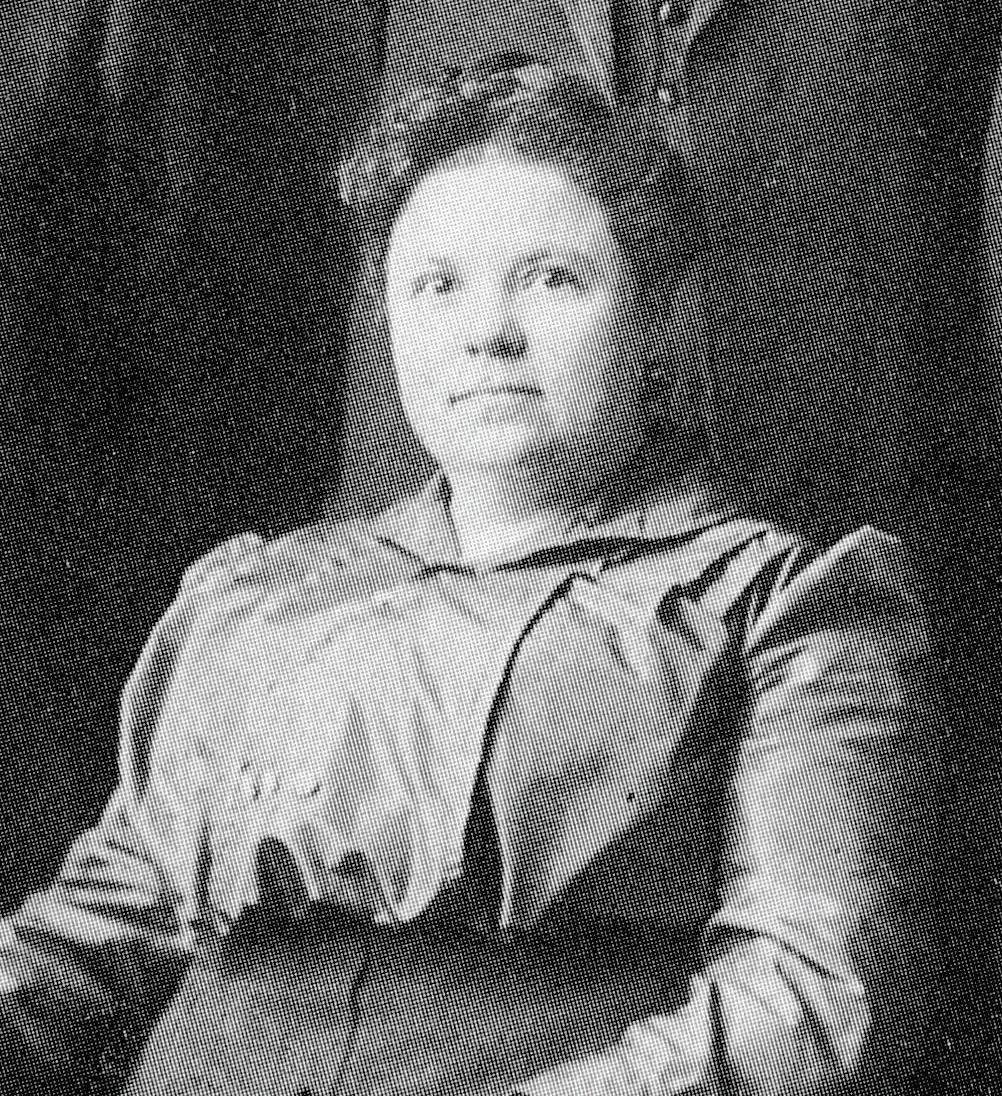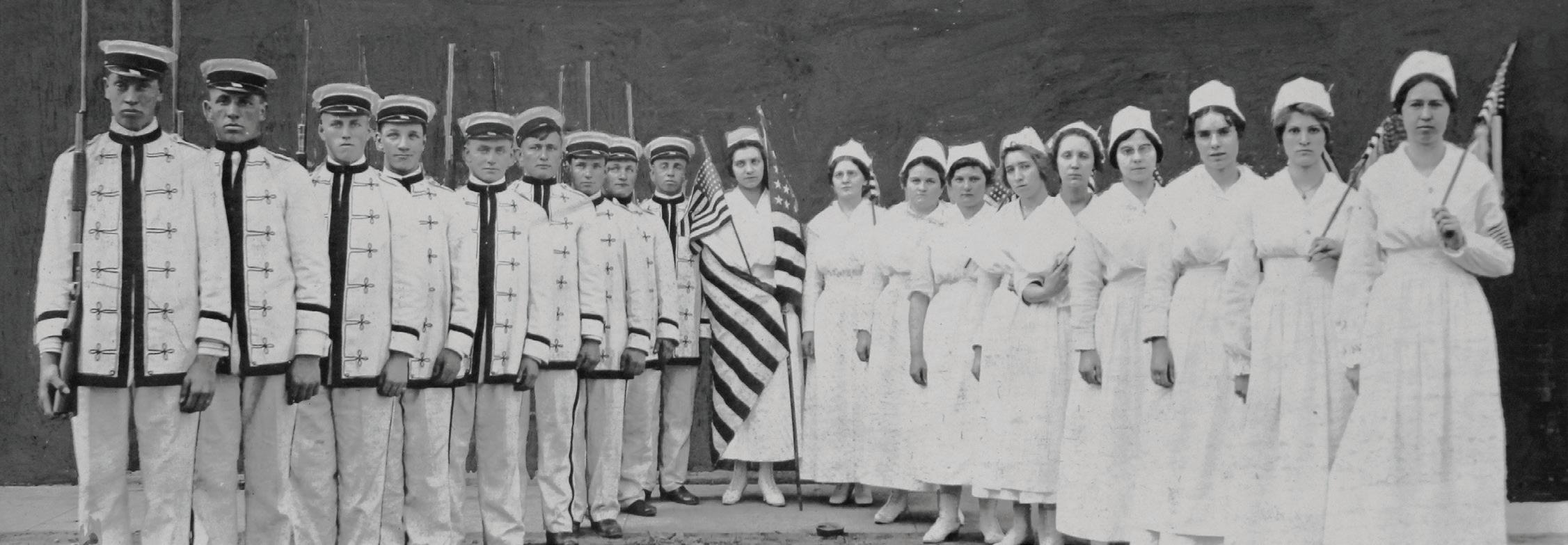
4 minute read
Years of Rapid Growth
Women of Gleaner
Elfa L. Munn
Advertisement
For more than 40 years, Elfa Munn served the Society as a reliable leader in an era when few women — let alone farm wives — were executives. She was elected to the Executive Committee as Supreme Chaplain in 1914, then ascended to the Supreme Council where she served from 1916 until fi nally resigning in 1955. During that span she helped oversee the Gleaner Memorial Home from its creation, even serving as its matron from 1937 until its sale in 1942, and continued to take interest in members of “the Home Family.” She also was one of three members of a budget committee created in 1936 to help the Society cut costs to cope with the Great Depression.
Elfa Leila Meyers was born Dec. 8, 1875, in Barry County, Michigan. She married Arthur H. Munn on March 22, 1905, began farming outside Grand Ledge, Michigan, and joined the Society’s Oneida Center Arbor in 1911. In addition to their work, she and Arthur enjoyed fi shing at a summer cabin located at Fife Lake until his death in 1933. She remained on the Supreme Council until the year before her brother’s death.
Elfa Munn died Oct. 25, 1964, in Lansing, Michigan, and is buried next to her husband in Charlotte’s Maple Hill Cemetery. “She has built herself a special niche,” President R.G. Ransford wrote, “not only in the annals of Gleanerism, but in the hearts of all who were privileged to know her.” The Wainwright home. Mrs. Wainwright and her three children were supported by Gleaner arbors after Fred Wainwright’s death.

1919 and 1920, Gleaner members pushed for passage of the 19th Amendment in Midwest state legislatures.
Gleaner members also worked together to help families in need. One example of compassion is found in the story of the “Wainwright Fund.” In 1898 Fred Wainwright applied for membership in the Protection Arbor and a $1,000 certificate. His application was sent to Caro but held pending his initiation. A “fearful storm” prevented him from attending the initiation and before the next meeting could be held, he died, leaving a wife and three children. Although the order had no legal obligation, 350 arbors and individuals donated more than $1,000 to pay the certificate. Similar examples of Gleaner generosity are found in old copies of The Gleaner publication.
Years of Rapid Growth
At the end of 1898 there were 301 arbors in the Society, all in Michigan, and none farther than 75 miles from Caro. On March 27, 1899, Ohio issued an insurance charter, the fi rst outside of Michigan. Organizers had been busy in the state for some time, and Brooklyn Arbor near Toledo became the fi rst out-of-state unit in May of 1899. Within a year there were 10 other Ohio arbors in Lucas and Wood counties. The Indiana charter was issued by the state in March of 1900 and soon there were 13 arbors in Steuben and LaGrange counties. Berkey, Rochester and
Sugar Ridge were among the earliest Ohio arbors, while Mapleton, Scott, Hudson and Gleaner arbors were the pioneers in Indiana. John Livingston was the organizer in Indiana and W.H. Cook in Ohio.
In 1902 Iowa became the fourth state to issue a charter. E.H. Magnant of Stanton, Michigan, was appointed state organizer and left a memorable record of his horse and buggy trip from his home in Stanton to Colesburg, Iowa. He left Stanton on Oct. 11, crossed Lake Michigan to Chicago by boat, through Rockford and Dubuque to Colesburg, arriving on Oct. 23. It was a graphic description of travel in the early days of the 20th century.
Illinois issued a charter in October of 1906, making fi ve states in all. The expansion led to the fi rst convention outside Michigan. Ohio was chosen, and the Sixth Biennial Convention took place in Toledo’s Memorial Hall in 1907. Headquarters for the Society at the convention were at the St. Clair Hotel. Special train rates were negotiated and nearly all the delegates arrived by rail. The Toledo meeting set the pattern for future out-of-state gatherings even though, as one member observed, “There are more Gleaners in one Michigan county than in some of those states.” Kansas issued a license in September 1917, followed by Arkansas, Montana and South Dakota. By 1917 there were members in Idaho, Minnesota, North Dakota, South Dakota, Nebraska, Wisconsin, Kansas, Iowa, Illinois, Indiana, Ohio and Michigan. Pennsylvania became a Gleaner state in 1918. Not all states required a special license to operate a fraternal insurance program including several of those listed above.
There were special benefi ts for those fraternals in existence 20 years or more with at least 100,000 members. They could, under the Mobile Law, set their own rate structure. The Gleaner rate would be at least 20% under that being charged if 100,000 members could be enrolled. It was a powerful incentive to move into other states. Just as the Society began to plan further expansion, the United States entered the fi rst World War and the eff ort ground to a halt. It was impossible to recruit new agents because of the military draft. As a result, membership reached a 20th century peak at 75,000 in the 1912-1918 period. A majority of members lived in Michigan, Ohio, Indiana and Illinois.

The 10th Biennial Convention at Kalamazoo, Michigan, in 1916 drew more than 1,600 people.

Members of Oakwood Arbor (MI) helped with this patriotic display in 1917, the year America entered World War I.
27
28










